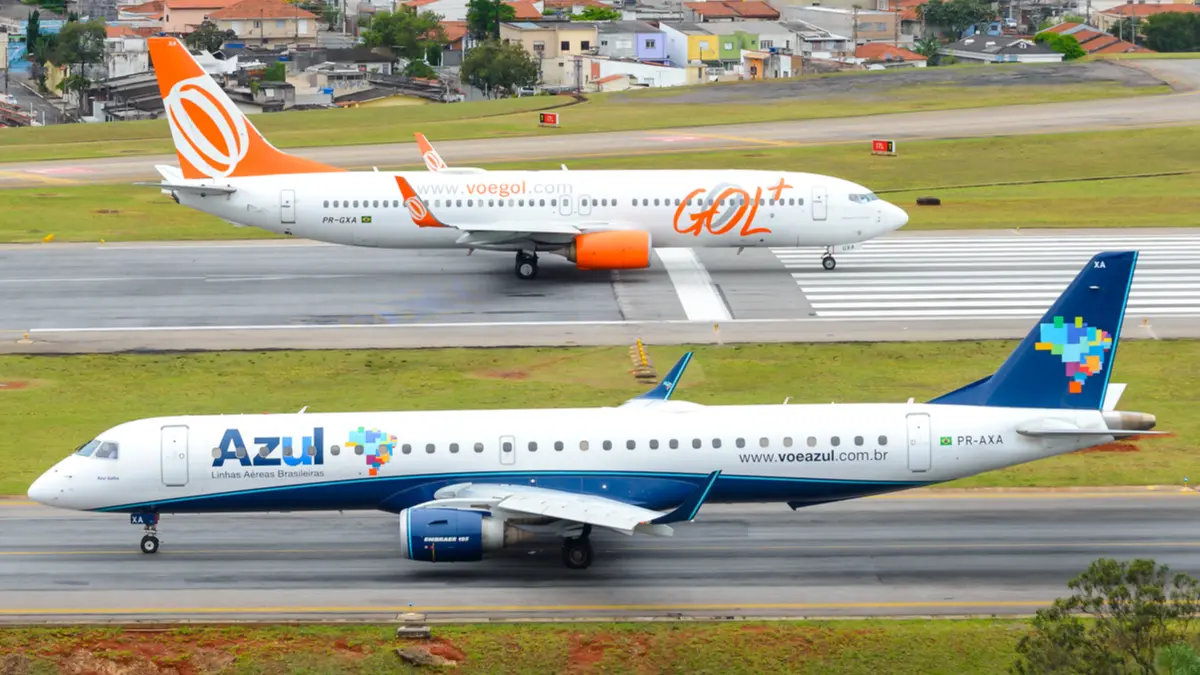The Brazilian airline industry is struggling in 2024, with leading carriers Azul and Gol experiencing sharp stock price declines of 60% and 85%, respectively, since late 2023.
This contrasts starkly with their international peers’ performance. Gol has entered Chapter 11 bankruptcy proceedings in the U.S., while Azul fights to avoid a similar fate.
Meanwhile, Chile’s Latam Airlines has surged by 91.85% since December 2022, and U.S. carriers Delta and United have posted gains of nearly 30% and 20%, respectively.
Several factors contribute to Brazilian carriers’ woes. Jet fuel costs account for about 40% of their revenue, compared to 20% for U.S. carriers.
Currency fluctuations exacerbate the problem, with the real depreciation against the dollar increasing aircraft leasing and other dollar-denominated expenses.


The dollar has gained 12% against the real this year alone. High interest rates and lingering pandemic effects further impact the sector.
Navigating Challenges and Seeking Recovery
Brazil’s benchmark interest rate is expected to end the year at 11.25%, while air travel demand lags behind pre-pandemic levels.
Additional challenges include logistical issues, airport infrastructure problems, and route overlaps. U.S. airlines benefit from a more stable currency environment.
This helps them avoid the currency-related expenses that plague their Brazilian counterparts. Experts emphasize that Brazil’s aviation sector struggles stem from macroeconomic factors rather than mismanagement.
Despite these challenges, some analysts see the potential for recovery. They argue that current stock prices don’t reflect the fundamental value of companies like Azul and Gol.
Improved revenue per passenger kilometer and the prospect of lower interest rates offer hope. However, experts caution investors to approach the sector carefully.
While the potential for significant gains exists, substantial risks remain. As Brazilian airlines navigate these turbulent skies, their ability to weather the storm and emerge stronger remains uncertain.
Despite these challenges, some analysts see the potential for recovery. They argue that current stock prices don’t reflect the fundamental value of companies like Azul and Gol.
Improved revenue per passenger kilometer and the prospect of lower interest rates offer glimmers of hope. However, experts caution investors to approach the sector with care.
While the potential for significant gains exists, the risks remain substantial. As Brazilian airlines navigate these turbulent skies, their ability to weather the storm and emerge stronger remains to be seen.

